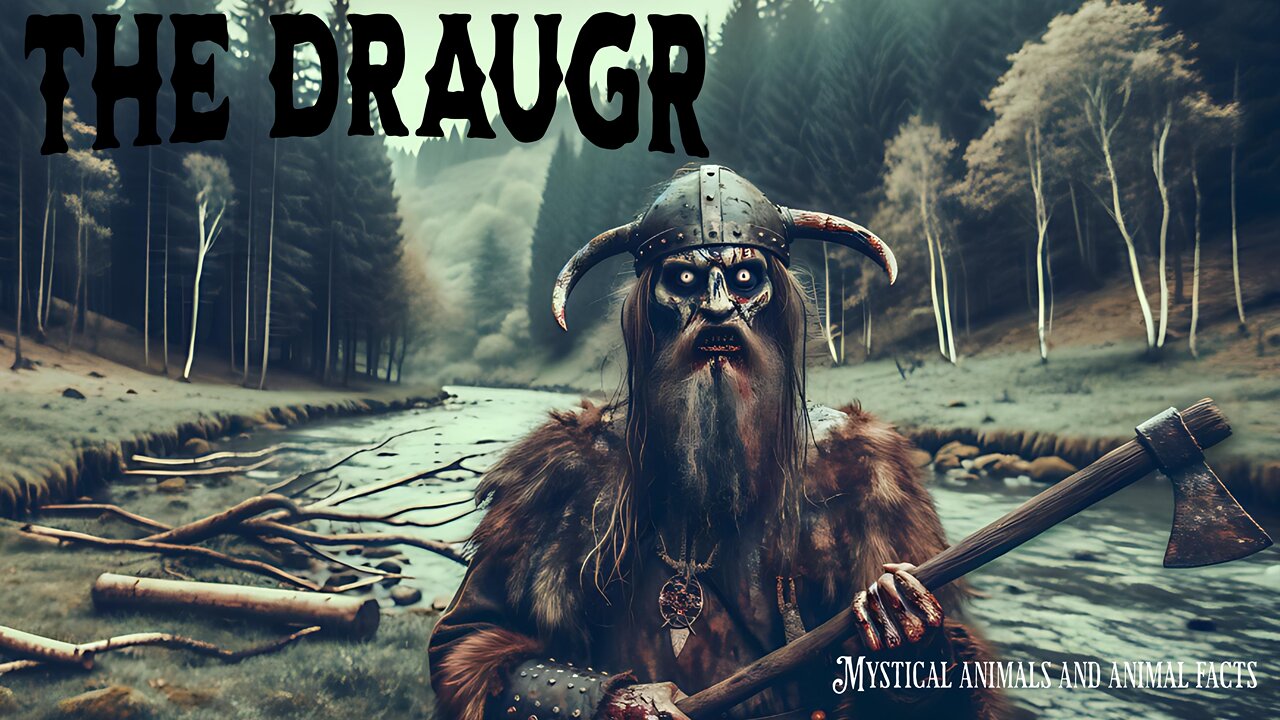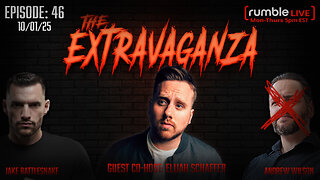Premium Only Content

The Draugr in Norse mythology and culture - mini documentary
Shirts and more
Designs Redbubble
https://www.redbubble.com/people/ReneMM/shop?asc=u
Spreadshirt.at
https://www.spreadshirt.at/shop/user/renemm/?srEdit=pa#?affiliateId=1257693
Spreadshirt.com
https://www.spreadshirt.com/shop/user/renemm/?srEdit=pa#?affiliateId=11625
Shirtee.at
https://www.shirtee.com/de/catalogsearch/result/index/designer_id/112048/all_stores/
1/
The draugr, a figure from Norse mythology and Scandinavian folklore, is a reanimated corpse that is described in detail in many Old Norse sagas. As a supernatural being, the draugr embodies the idea of an ominous existence after death, often associated with the protection of one's own grave or accumulated riches. Unlike other ghostly apparitions, the draugr is not a disembodied being, but a physically present, decayed or monstrously deformed corpse that uses its superhuman strength to threaten or punish the living. The origin of a draugr is often associated in sources with an improper burial, a violent death, or a life full of greed and malice, preventing the soul of the deceased from entering the realm of the dead. Characteristic of the draugr is its supernatural strength, which enables it to smash stones, leave graves, and overwhelm even experienced warriors in battle. In addition, it is said to have magical abilities, including control over weather phenomena, the ability to transform into animals, and the power to curse landscapes, rendering them barren. Its appearance varies depending on the saga: some descriptions emphasize blackish, bloated skin, others a grotesque distortion of the limbs or growth beyond normal human size. The smell of decay and an eerie coldness surrounding the draugr are also mentioned as typical characteristics. Fighting a draugr requires specific rituals or physical measures, which are described in detail in the sagas. A recurring motif is the need to kill the corpse again, often by decapitation, burning, or destruction of the heart. Iron and steel are considered effective weapons, while traditional burial practices such as carrying the coffin through a specially constructed “corpse opening” in buildings served to prevent the return of the dead. In some stories, heroes must defeat the draugr in single combat, with the battle being fought not only physically but also magically, for example by reciting spells or using sacred objects. A famous example is the confrontation between Grettir the Strong and the draugr Glámr in the Grettis Saga, in which the hero only prevails after a long battle and is himself cursed in the process. In these stories, the draugr serves not only as an antagonistic force, but also as a symbol of the boundaries between life and death, which were fluid in pre-Christian Norse culture. Its existence reflects fears of a disturbance of the natural order, such as grave robbery or a lack of respect for the dead. Cultural anthropological research suggests that the draugr myths also served practical functions, such as deterring people from entering burial sites or enforcing social norms by depicting the consequences of immoral behavior. At the same time, they point to the complex conceptions of the afterlife in the Viking Age, in which death was not seen as the final end, but as a transition to another state. Unlike the undead creatures such as vampires or revenants that are common in later European legends, the draugr is closely linked to specific landscapes and cultural practices in Scandinavia. Its depiction in the sagas emphasizes local characteristics, such as its connection to burial sites near fjords or the role of rune stones as protection against its return. Archaeological finds such as heavy gravestones, weapons placed in graves, or the orientation of the dead in certain cardinal directions can be interpreted as material traces of these beliefs. The Christianization of Scandinavia led to a transformation of the draugr figure, which was now increasingly associated with demonic powers, but elements of the original mythology remained in regional traditions. Despite its sinister nature, the draugr thus embodies not only a threat, but also the cultural significance of commemorating the dead and reverence for the mysteries of death in the Norse world. An interesting mythical creature from Norse culture. I would be very happy to receive a like and a subscription.
-
 1:02:40
1:02:40
BonginoReport
3 hours agoA Florida Man Attempts a Jussie Smollett Hoax - Nightly Scroll with Hayley (Ep. 146)
102K55 -
 LIVE
LIVE
XxXAztecwarrior
2 hours agoNew Season/ New missions/Delta Force
45 watching -
 1:17:15
1:17:15
Playback Request Live
2 hours agoPRL EP 14 - EMO NIGHT 🖤
7472 -
 LIVE
LIVE
Blabs Games
4 hours agoWill We Find A Server? Star Wars Battlefront II | Noob Plays
82 watching -
 LIVE
LIVE
LFA TV
22 hours agoLIVE & BREAKING NEWS! | WEDNESDAY 10/1/25
640 watching -
 30:00
30:00
BEK TV
9 hours agoGUT HEALTH AND THE POWER OF KIMCHI WITH KIM BRIGHT ON TRENT ON THE LOOS
5.05K -
 LIVE
LIVE
LIVE WITH CHRIS'WORLD
3 hours agoLIVE WITH CHRIS’WORLD - Democrats SHUTDOWN The Government
52 watching -
 1:05:05
1:05:05
TheCrucible
5 hours agoThe Extravaganza! EP: 46 with Guest Co-Host: Elijah Schaffer (10/01/25)
82.4K18 -
 1:22:37
1:22:37
Kim Iversen
5 hours agoWas Tyler Robinson a Patsy? Deep Investigation Exposes the Plot Holes in the Kirk Shooting
69K87 -
 1:49:03
1:49:03
The Mike Schwartz Show
6 hours agoTHE MIKE SCHWARTZ SHOW Evening Edition 10-01-2025
17.3K3